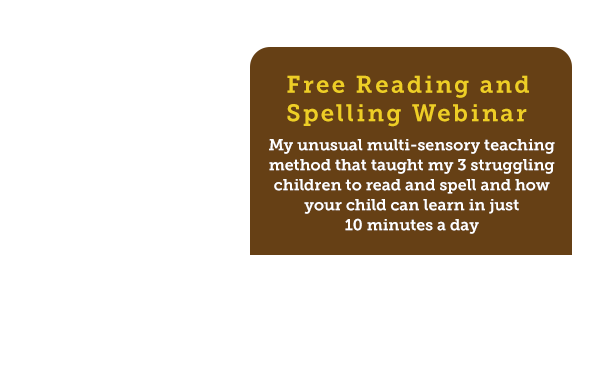
The seemingly intelligent child who struggles to learn to read, write and spell is a mystery to many teachers and their parents. How can a child be so verbally comprehensive, capable in hands-on classroom activities, often able to excel in music, art, drama, science, certain areas of math and sport, but have difficulty decoding the 26 symbols of the alphabet and learning the sound relationships that bind them together to form words?
An inability to decode alphabet symbols and their related sounds can lead to an ongoing difficulty with learning to read, write and spell. Such a difficulty can have a neurological basis and if so is deemed to be the learning disability ‘dyslexia’.
So does a child with dyslexia have a learning difference, a learning difficulty or a learning disability? Lets look at each separately.
A Learning Difference
As adults we all have preferences for the way we like to learn. When you go to IKEA and purchase a flat pack piece of furniture to take home and put together, how do you tackle it? Do you read the instructions from start to finish……Twice? Do you discard the instructions and lie out all the nuts, bolts, washers and melamine sheets to see how they may fit together? Do you wish that you had an instructional CD or video or somebody was there to show you how to do it so you could copy them or they could do it for you?
All children are just the same, they have learning preferences. They may prefer visual, aural, touch or kinaesthetic cues and if such learning methods were offered they would move ahead in leaps and bounds. The other learning difference comes with memory. How many times a child needs to be exposed to facts, information and concepts before they can recall, apply and remember what they have learnt.
A Learning Difficulty
Every student experiences a learning difficulty at some time during school. Not everyone is good at everything. Some are quick to learn to read, but slow to comprehend, some can understand the concept of number but cannot recall their times tables or easily grasp algebra, fractions or decimals. When a learning difficulty presents itself a student may try harder, a teacher may introduce varied teaching methods to create a better understanding of a concept or without support a child may just give up and begin to fall behind. Subsequently gaps can begin to form in their understanding and they may begin to fall behind and then struggle to catch up. If at some time in the future appropriate teaching strategies are provided a motivated student can overcome a learning difficulty and will begin to learn.
A Learning Disability
A learning disability is more complex and has a neurological basis. It usually affects a range of skills and cognitive abilities and in majority of cases the student does not repond to or improve when best practise teaching techniques and programs are provided.
Although the word dyslexia is based on the Greek language meaning ‘dys for difficulty’ and ‘lexia with language’, and generally impacts on learning to read write and spell, dyslexia can affect many subject areas.
When a child experiences any form of learning difficulty, which may indicate a learning disability, it is important to recommend that parents or guardians seek the appropriate sight and hearing tests to rule out a medical or physical reason for their difficulty. After these have been conducted if the learning problems continue a diagnostic educational assessment conducted by a trained educational specialist with a qualification in dyslexia or an educational or neuro psychologist is a must.
Some parents and educators are fearful that a label will be a disadvantage for the future prospects of a student, however nothing could be further from the truth.
In Australia a label of dylexia or learing disability means a child cannot be discriminated against. The Anti-Discrimination Act protects a child’s rights through the Disability Standards for Education 2005. All educationla institutions in Australia must provide appropriate support.
Such test results provide vital information. Most importantly they indicate to teachers and their parents where a child’s areas of learning weakness exist, but also where their learning strenghts are. This knowledge is the key to understanding how to effectively teach a child with dyslexia, what support structures to provide and how to help them to maintain their confidence and and ensure their long-term success at school and hopefully in life. Children with dyslexia are as intelligent as all other children. In many cases they are highly intelligent. Children with dyslexia can become successful learners when teachers utilise appropriate teaching strategies and offer appropriate accomodations.
To simplify it lets consider the neuoroglogoical processes that can be affected when a student has dyslexia and how teachers can assist a childr when they are experiencing learning difficulities.
Visual Processing Skills
- Tracking – Difficulty scanning their eyes left to right across a line of text and then locating the next line down they may lose their place or jump words or lines
- Text Distortion and Movement – They may experience the text moving or flashing or not be able to see the small words or parts of letters
- Light Sensitivity – Harsh lighting such as fluorescents may cause them to squint or expereionce eye strain or headaches
- Glaring – The overhead lights on their page may cause the white of the paper to flare over the top of words
- Slow processing rates – This is a difficulty to easily scan the words on a page and read them. This can take longer and take more mental energy than for a non-dyslexic reader
- Comprehension – This child may spend so much time trying to decode individual words that the meaning of the text is lost OR perhaps they read easily, but not for meaning
- Visual Perception – A clumby child who knocks into things or struggles to catch a ball can have this difficulty
- Concentration Levels – A student who works hard to read may lose concentration quickly as their eyes and brains tire more rapidly
- Strain and Fatigue – This child may squint, rub their eyes, find relief by staring out the window or suffer from headaches
How To Help Children With It
- Recommend an eye test
- Check out tinted lenses
- Tinted paper/acetates
- Change the background colour on the electronic whiteboard
- Use bigger/bolder font size
- Offer tracking devices
- Use less text – more visual cues/point form/ graphic organisers
- Offer students worksheets with good photocopy quality
- Provide a reading buddy, audio books, or text reader
Auditory Processing
Auditory Processing Disorder (APD) represents an inability to attend, discriminate, recognise, understand or analyse auditory information.
APD can adversely affect a child’s ability to listen, comprehend and learn – Specifically in the area of learning to read or thinking to write and then spell accurately.
Having an auditory processing deficit can impact on a child ability to to remember and apply what they have learnt in the following ways
Auditory Short Term Memory – Can’t recall facts, details and specifics
Auditory Working Memory – Has difficulty listening, thinking and processing information all at the same time.
Auditory Long Term Memory – Has a faulty memory bank
Auditory Sequencing Deficit – A difficulty to sequence sounds to speak and spell
Phonologial Awareness – Has difficulty with sound symbol relationships – Is it ‘with” or ‘wiv’?
Auditory Figure Ground Discrepancy- Can’t tune out the background noise created in a noisy classroom or even in their own homes
- Phonological Processing
- Executive Dysfunction
- Memory – working/long term
- Slow Processing Speed or Delay
Normal Intelligence


















